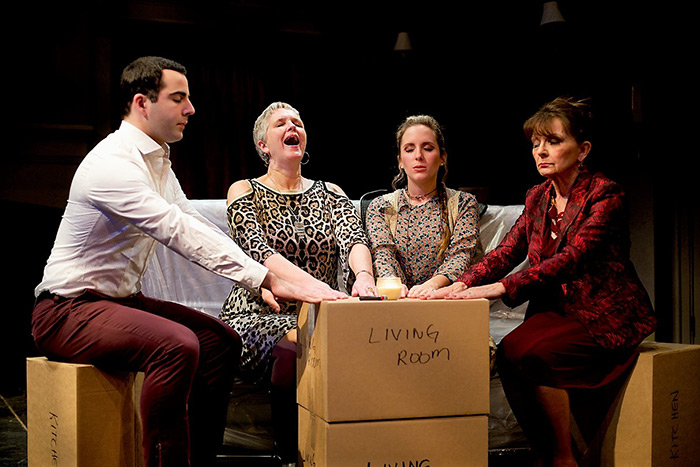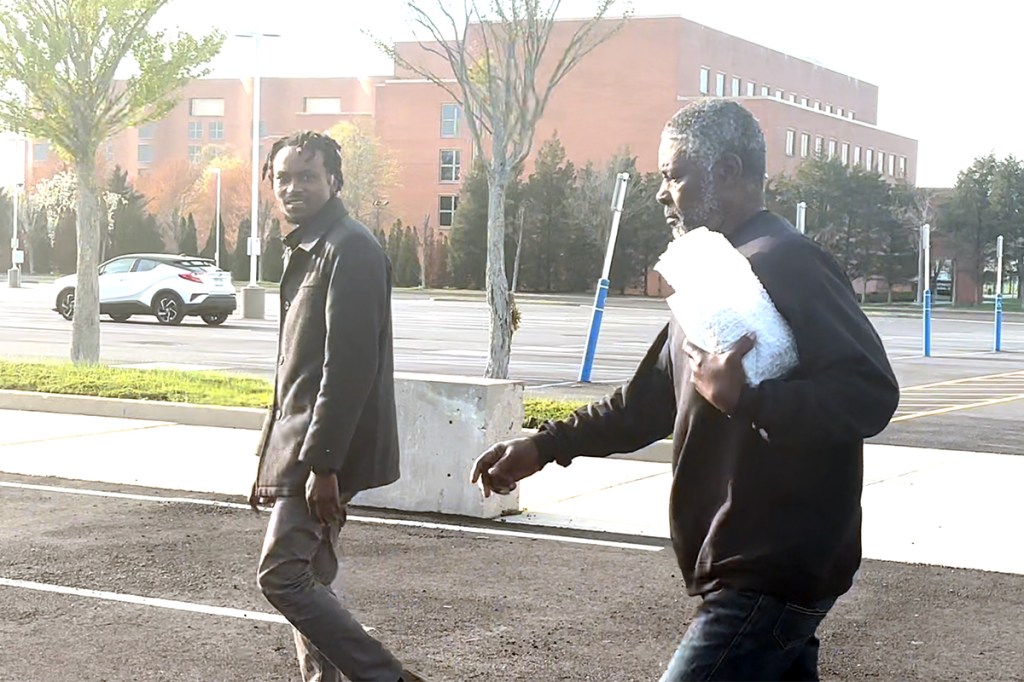Play Review: The Intrigue of 'I Hate Hamlet' On and Off the Stage

Playwright Paul Rudnick’s 2007 essay in The New Yorker magazine, aptly titled “I Hit Hamlet,” describes how he came to rent a “medieval duplex,” once the home of legendary actor John Barrymore who had taken up residency there just before he began performing Hamlet uptown. Rudnick researched the connection of Barrymore to this apartment and soon became inspired to write I Hate Hamlet.
Now showing at Theatre Three in Port Jefferson, the play revolves around Andrew Rally, a television star who moves to New York City from Los Angeles after his show was canceled. He enters the apartment with Felicia Dantine, his real estate agent, his acting agent Lillian Troy, and his girlfriend Diedre McDavey. Felicia discloses that the great Shakespearean actor John Barrymore lived here in the 1920s, while Lillian reminisces that she had a brief but magical affair with Barrymore in this very apartment. Adding further proof to her story, Lillian searches for and finds a hairpin she left behind so long ago.
Andrew has been offered the role of Hamlet in Central Park, but he hates Hamlet. Adding further complications, his 29-year-old actress-girlfriend, Diedre, is clasping tightly to her virginity.
The group holds a séance with hopes of conjuring the ghost of Barrymore. After a lightning flash, the long dead actor returns and convinces Andrew to accept the Hamlet role.

Conflict mounts when Andrew’s good friend and fast-talking Hollywood producer, Gary Peter Lefkowitz, arrives offering a lucrative television deal. He argues against doing Shakespeare in the park, noting, “It’s like algebra onstage. It’s Shakespeare for squirrels!”
In the end, Rally must decide if he will take on Hamlet in Central Park or return to television for big bucks.
Barrymore’s ghost convinces Andrew through a duel that there’s nothing greater than the opportunity to play Hamlet; to bask in the glory of Shakespeare far outweighs any money Hollywood could throw at him. Andrew ultimately chooses the Hamlet role, but opening night is a dud, forcing him to face harsh reviews.
The deeper subtext treats stage fright, Method acting and the glory of the stage versus Hollywood’s material lure.
Rudnick’s original production of I Hate Hamlet became shrouded in controversy shortly after opening at the Walter Kerr Theatre on April 8, 1991. “Our great challenge was in casting the role of John Barrymore—ghost, thespian and lecher,” Rudnick explains in that New Yorker piece. “If you’ve written a star, you need a star.”
They eventually landed on Nicol Williamson—a Scotsman who’d achieved fame on the London stage—for the magnetic role.
One problem, however, was Williamson’s penchant for altercation. He quickly alienated his fellow actors by constantly criticizing them. This came to a climactic blow one night during the duel with Andrew Rally (played by actor Evan Handler) near the end of the first act. Williamson hit Handler on the back with the sword. Incensed, Handler left the stage and the production. His understudy stepped into the role.

Maybe it was the intrigue and controversy or the mixed reviews that caused the show to close only a few months after opening, but on June 22, 1991, I Hate Hamlet ended its Broadway run.
Theatre Three’s production opened Saturday night, January 13 to the delight of its audience. Director, Mary Powers, has assembled some of the best actors Long Island theater has to offer, led by the highly charismatic Steve McCoy who delivers a mesmerizing performance as John Barrymore’s ghost. His Act II monologue in which he laments squandering his art and relinquishing his soul to Hollywood is captivating.
Powers directed her actors to attack entrances with high energy, accentuating opening lines. These grand entrances help to build characters and add to the comedy. The facility of this ensemble to deliver lines with impeccable timing is a tribute to Powers’ direction.
Linda May as real estate agent and psychic Felicia Dantine conjures up delicious mischief when she performs the séance to summon Barrymore. Andrew’s agent, Lillian Troy, played full throttle by the incomparable Marci Bing, who offers a raspy German accent punctuated with coughs. She asks the others if she might smoke, and Deidre requests that she doesn’t because it’s such an unhealthy addiction. Lillian retorts, “I know, I really must stop.” Deirdre asks, “Smoking?” Lillian replies, “No—asking.”
A particularly poignant scene features Lillian with Barrymore who attempts to seduce her as he once did. She wistfully smiles and laments that she’s old, but that doesn’t deter him. One is compelled to root for the older woman who’s still considered desirable.
Jessica Contino, the virginal Diedre McDavey, turns in a lively performance as the ingénue as she sashays around the stage with her broad, flirty smile. Steve Ayle as the fast talking, Hollywood hawker, Gary Peter Lefkowitz, could convince anyone to go down a decidedly shady alley.

At the center of the action is Dylan Robert Poulos as out of work television actor Andrew Rally who makes us care whether he takes on the challenging role of Hamlet rather than return to his vapid but highly lucrative celebrity life.
Randall Parsons’ scenic design adds to the allure of this medieval suite with its wrapped-up set of Act I that transforms into a gothic spectacle in Act II. Robert W. Henderson, Jr. adds to the haunting nature of Barrymore’s entrances and exits with flashes of lighting. Su Jung Lee Weaver’s costume design gives us Barrymore’s Hamlet swathed in tights and tunic, which is later mirrored by Rally. Steven Uihlein’s fight choreography makes for adroit sword-play that emits gasps from the audience.
Let’s hope this incarnation of I Hate Hamlet has a smooth run and avoids the intrigue that rattled the original Broadway production.
I Hate Hamlet runs at Theatre Three (412 Main Street) in Port Jefferson until February 3, 2018. Call 631-928-9100 or visit theatrethree.com for tickets and showtimes.

Barbara Anne Kirshner is the author of Madison Weatherbee-The Different Dachshund, a children’s book and musical. She is a regular contributor to DansPapers.com.



